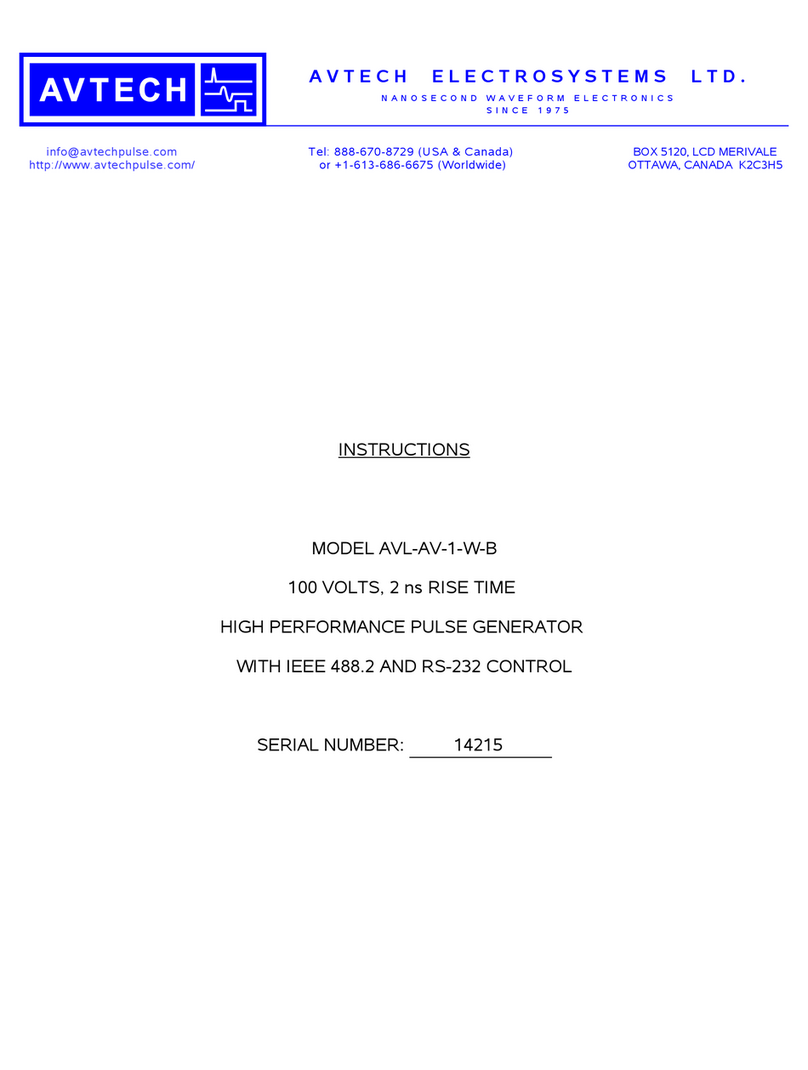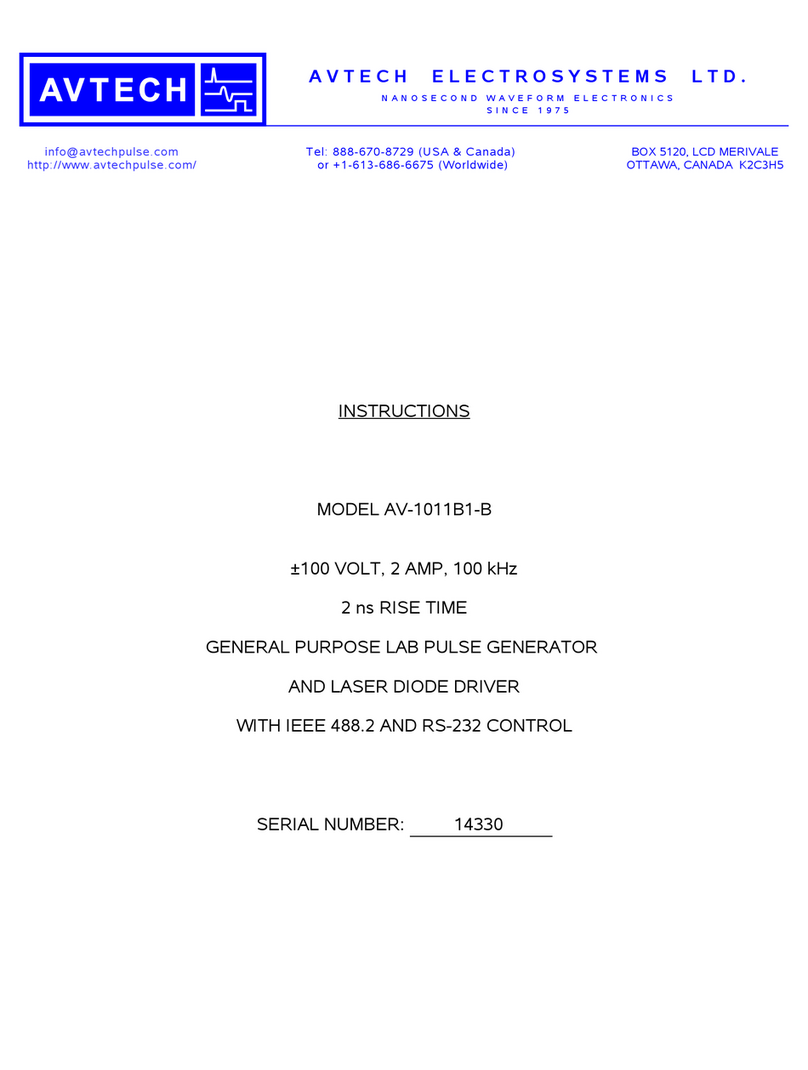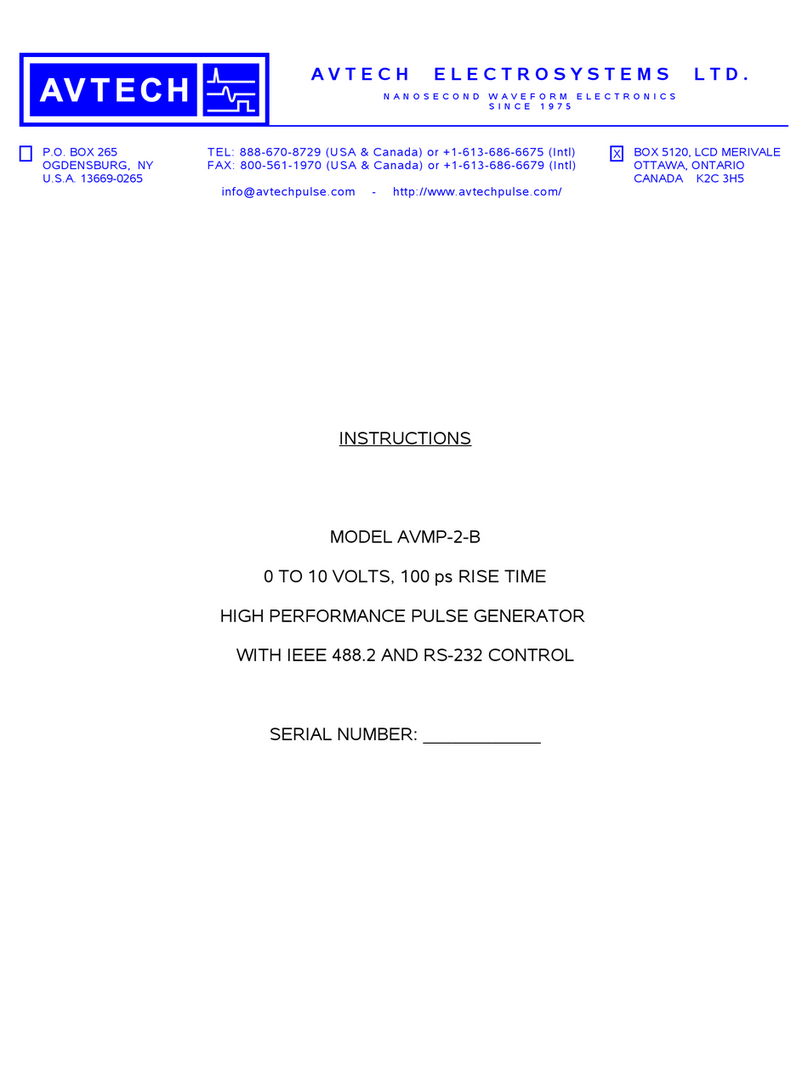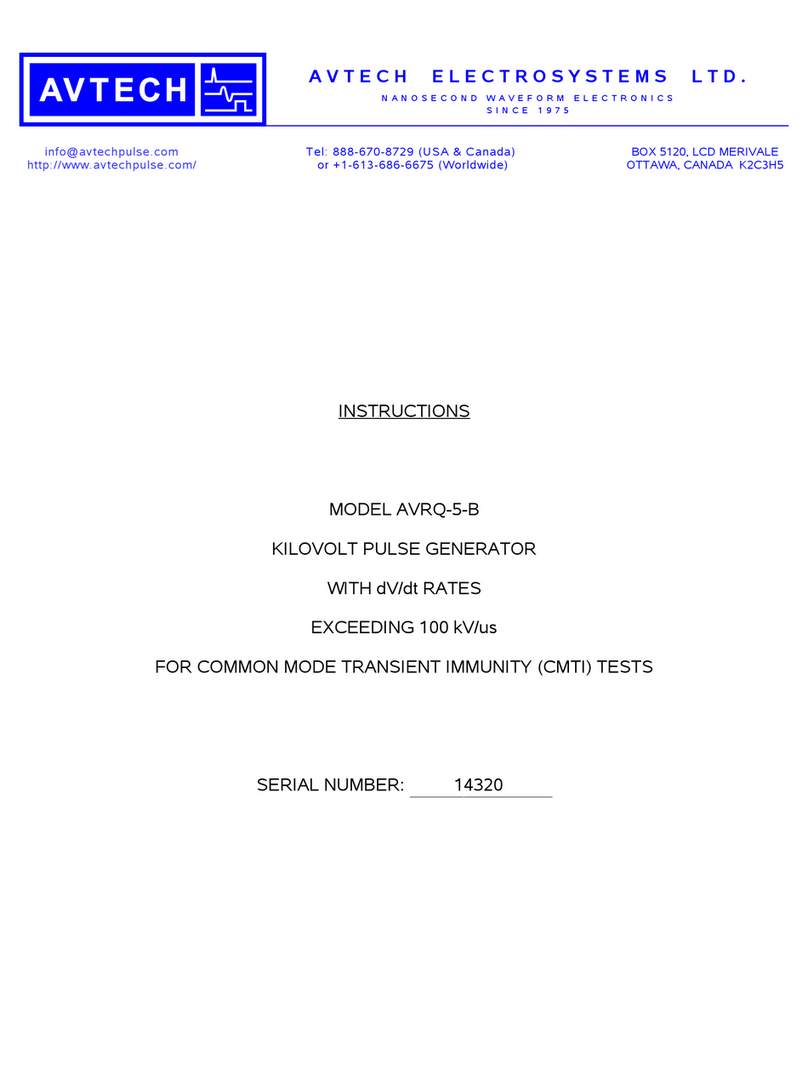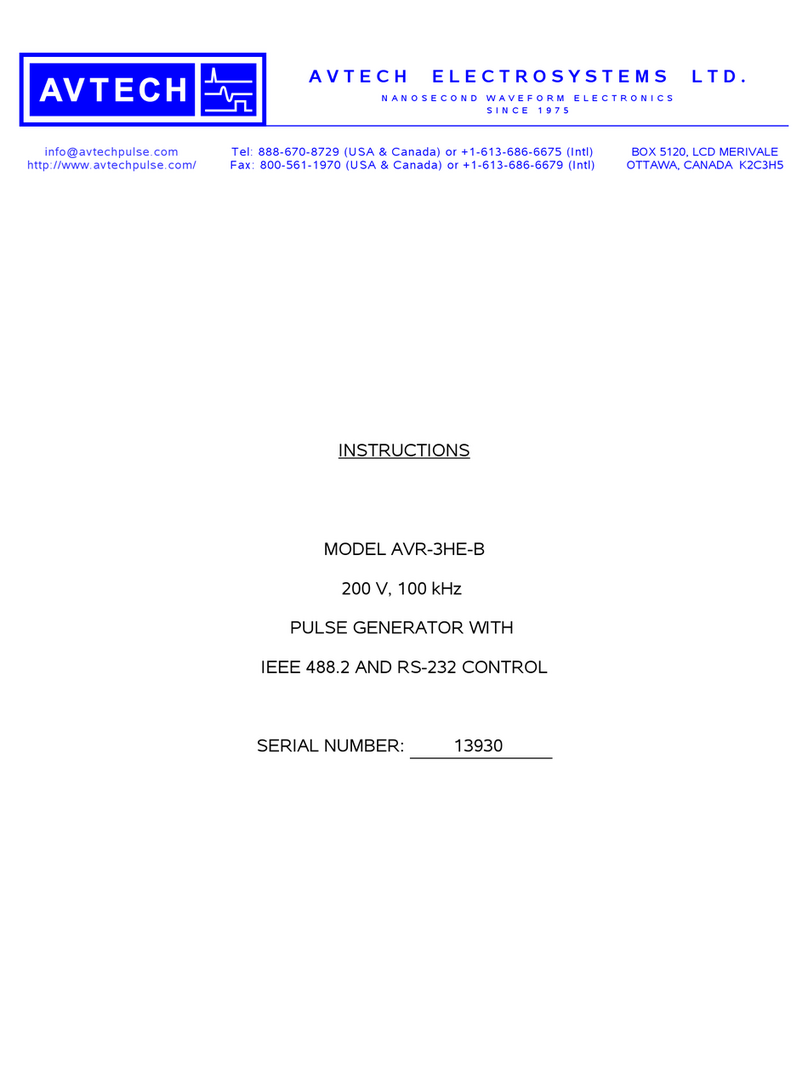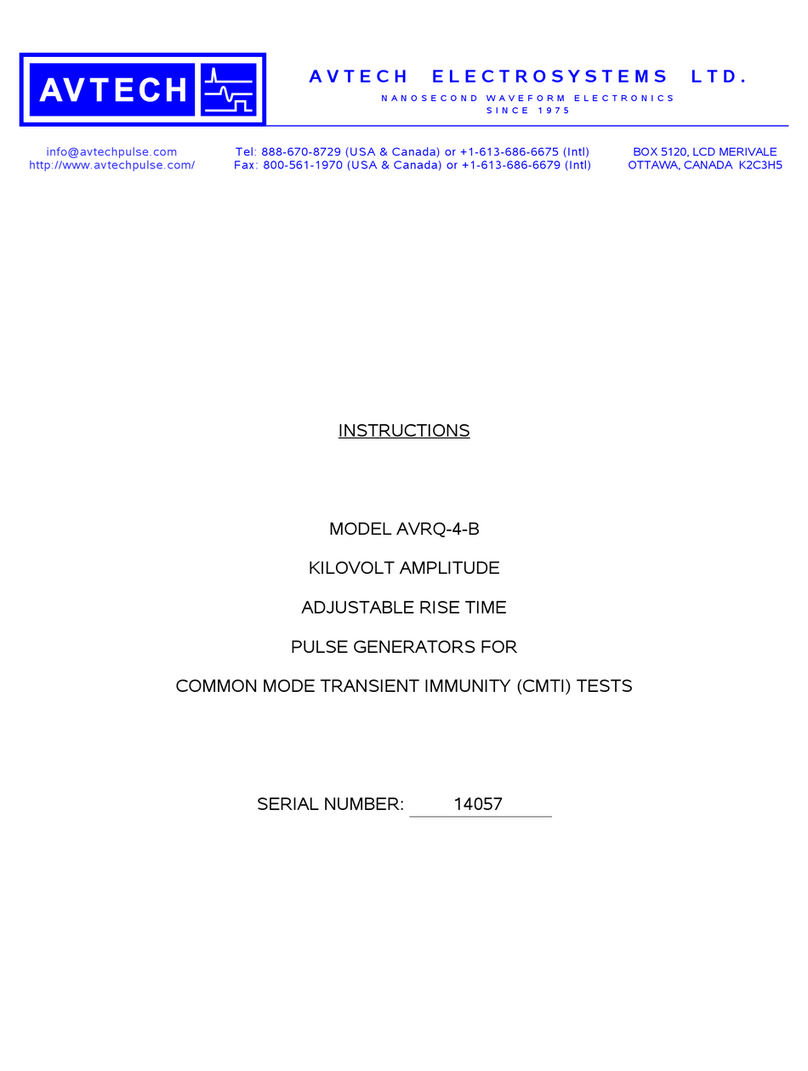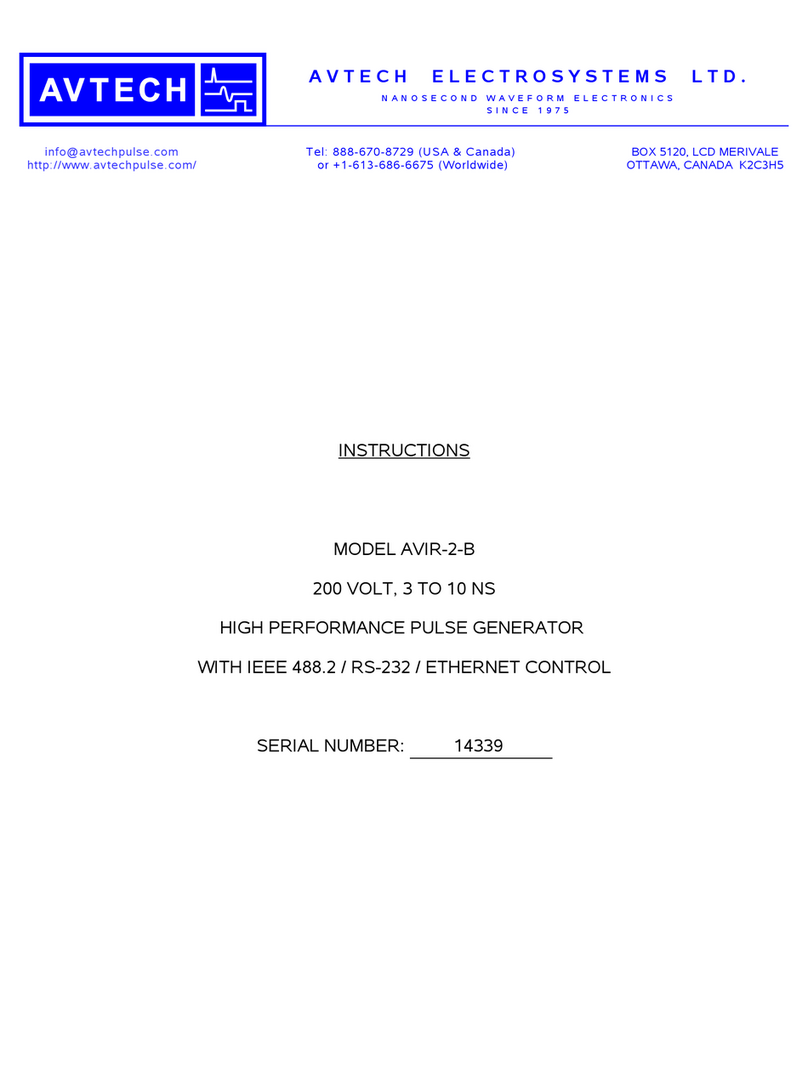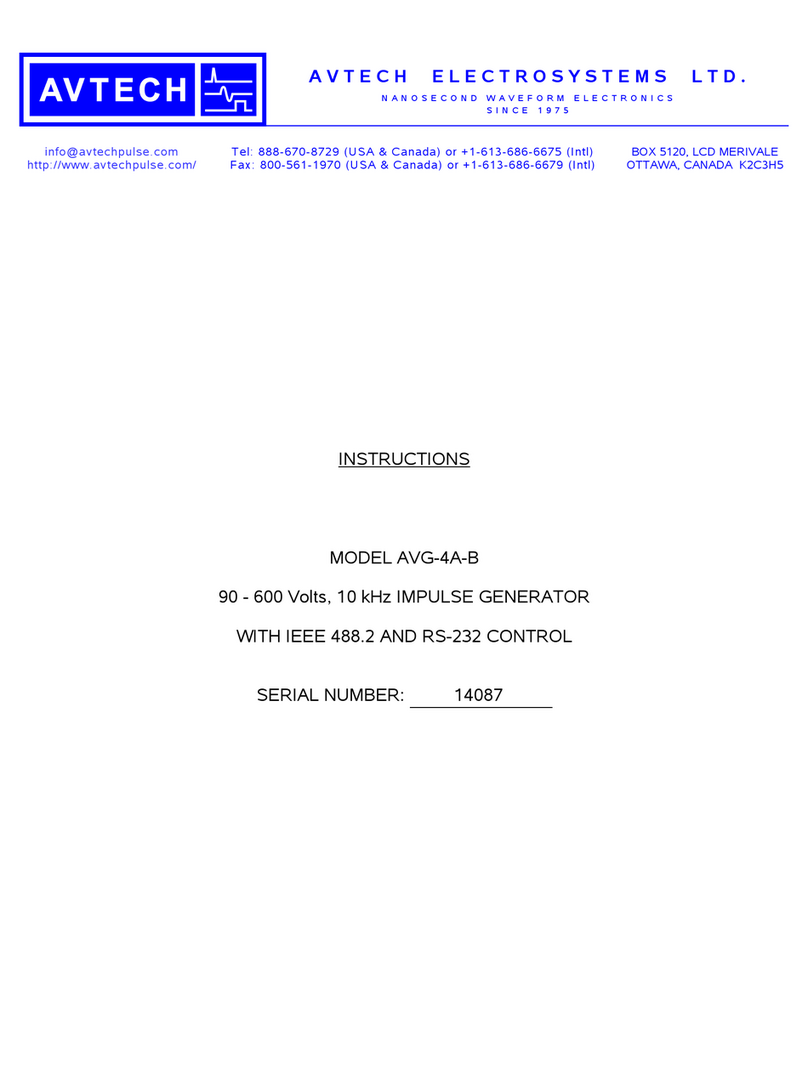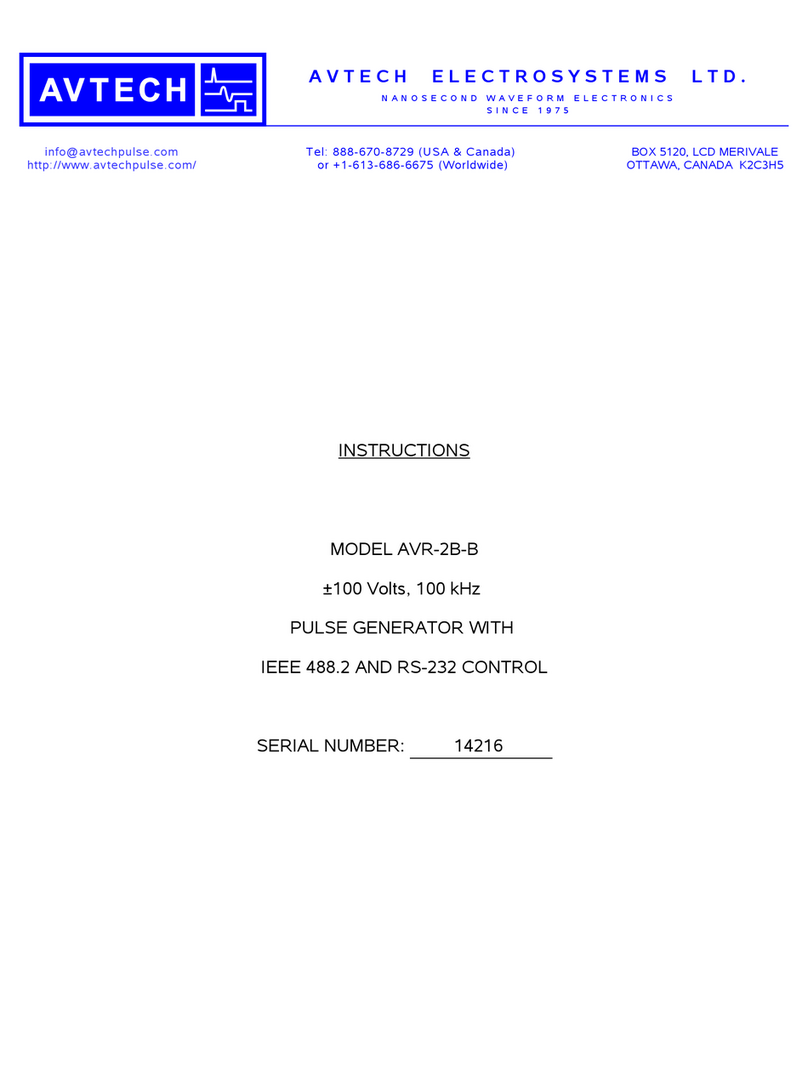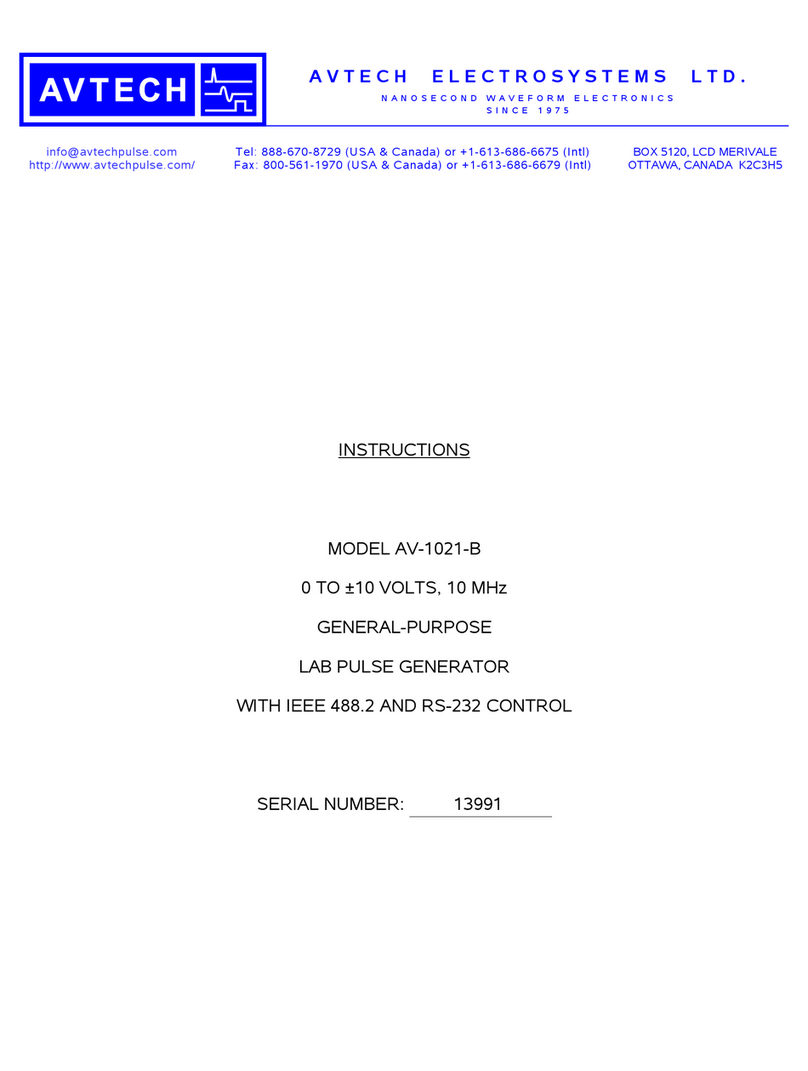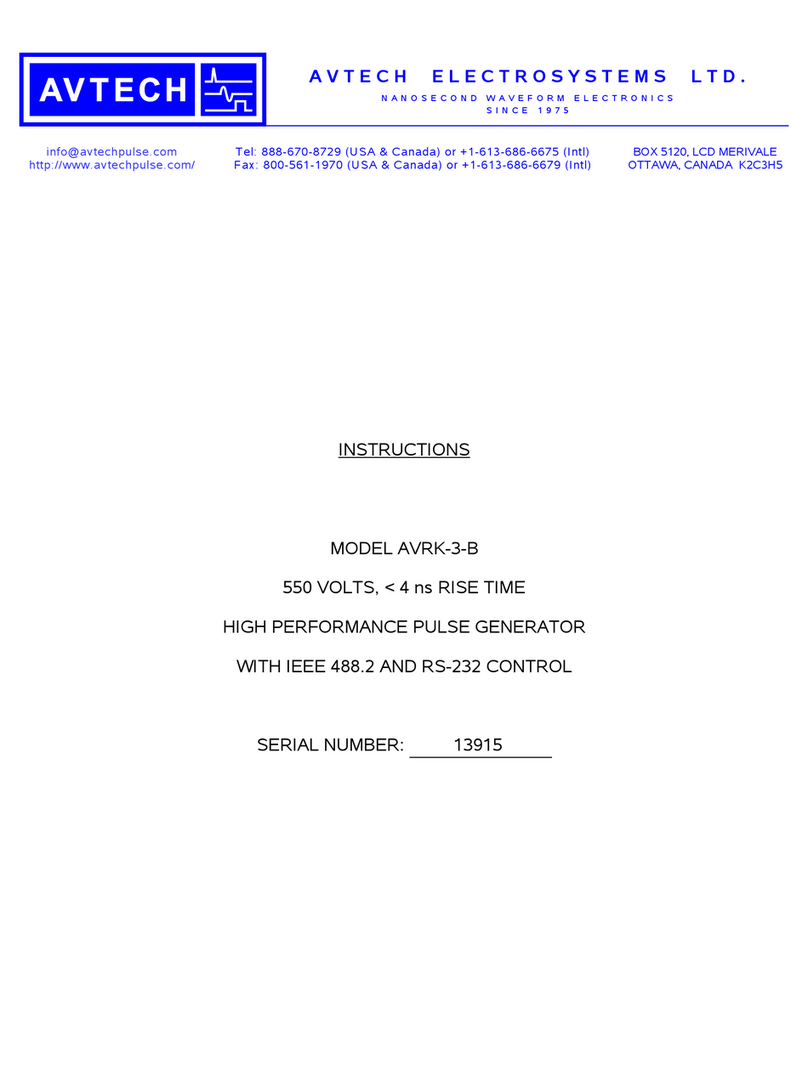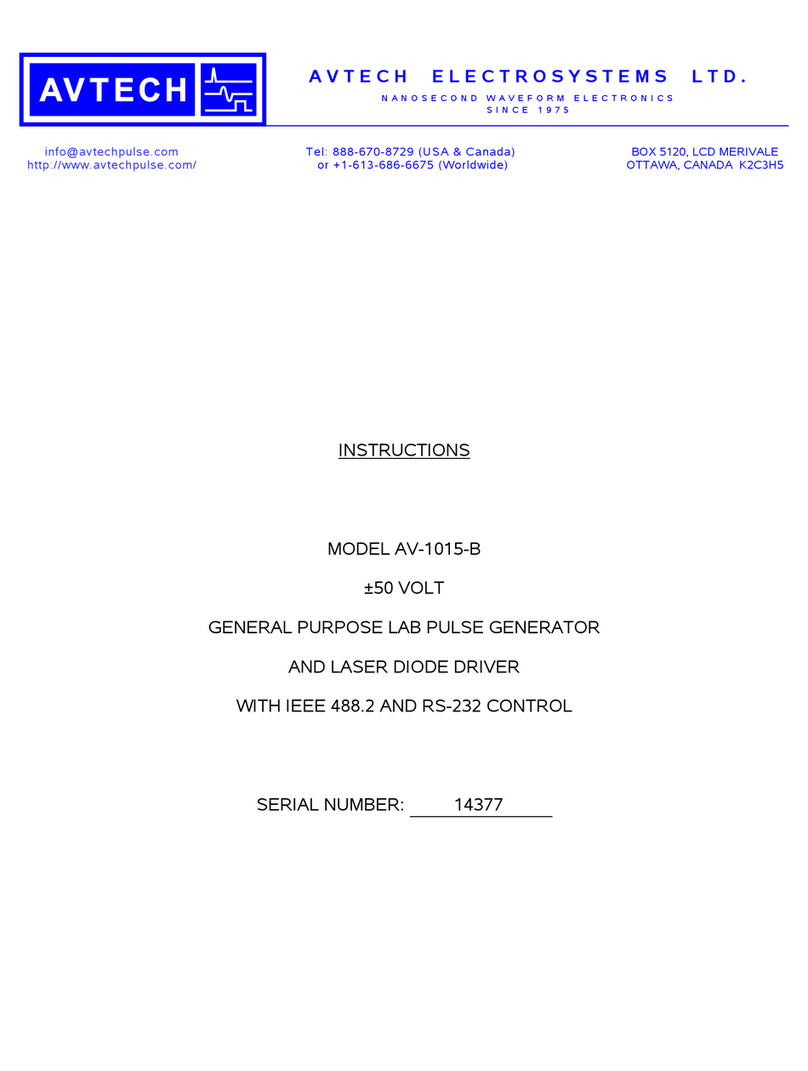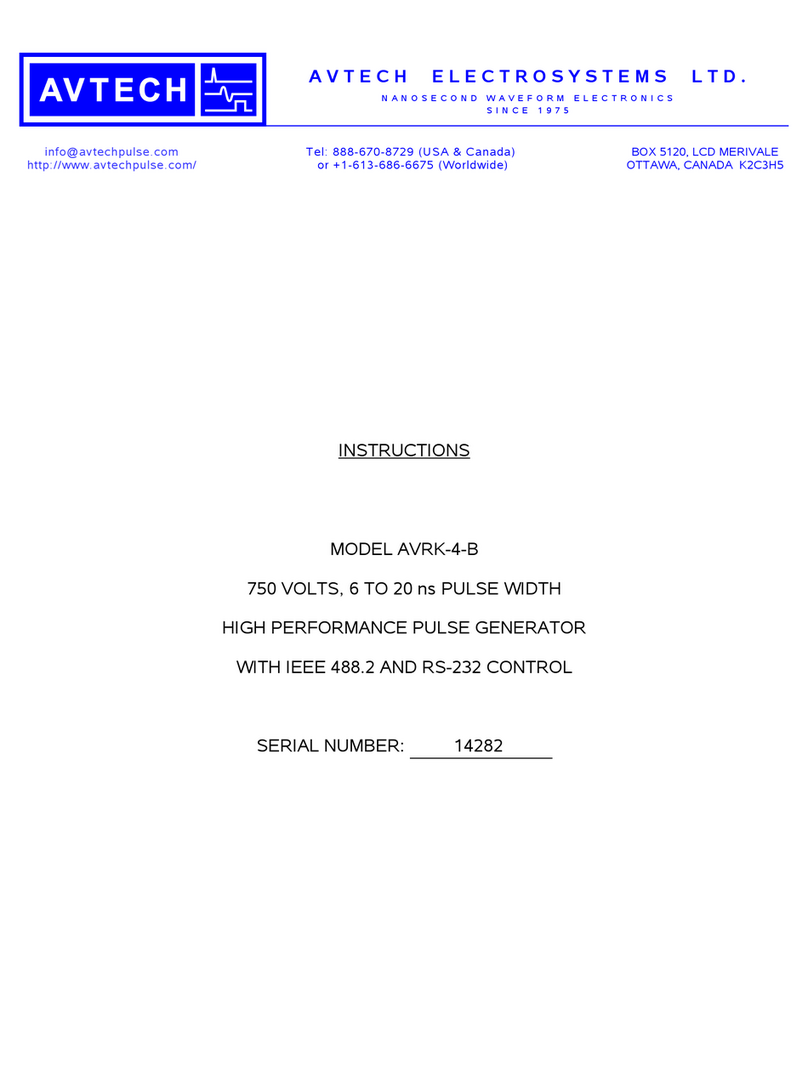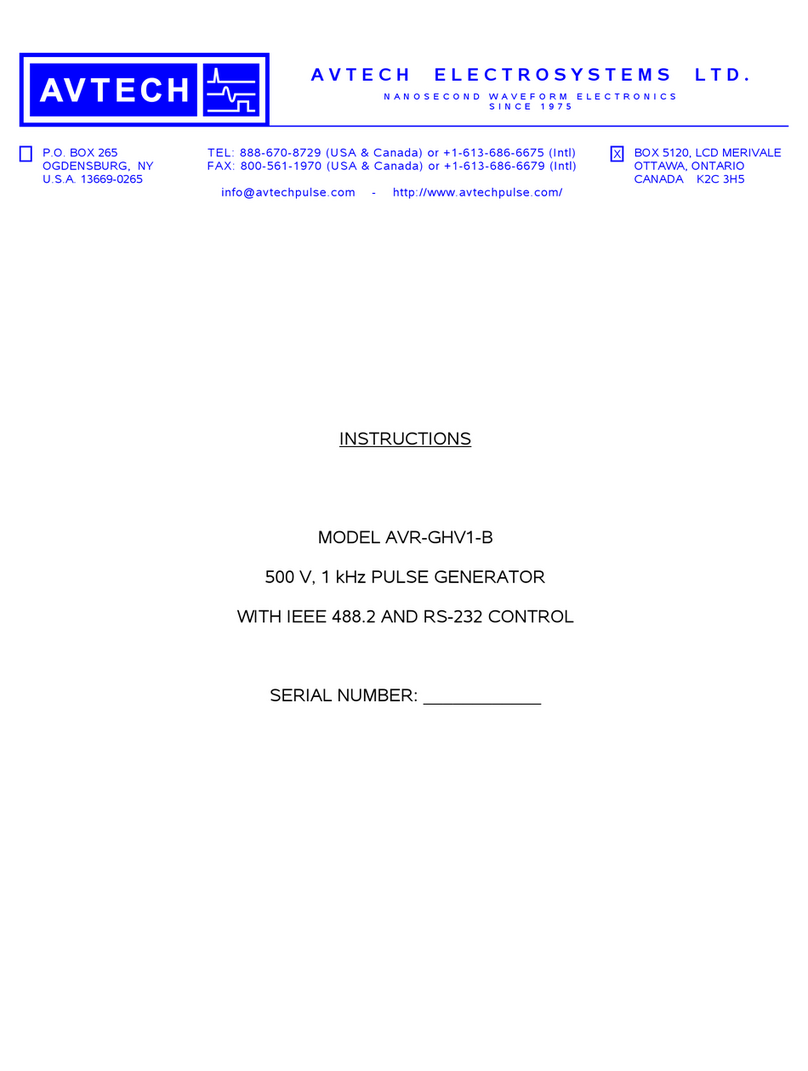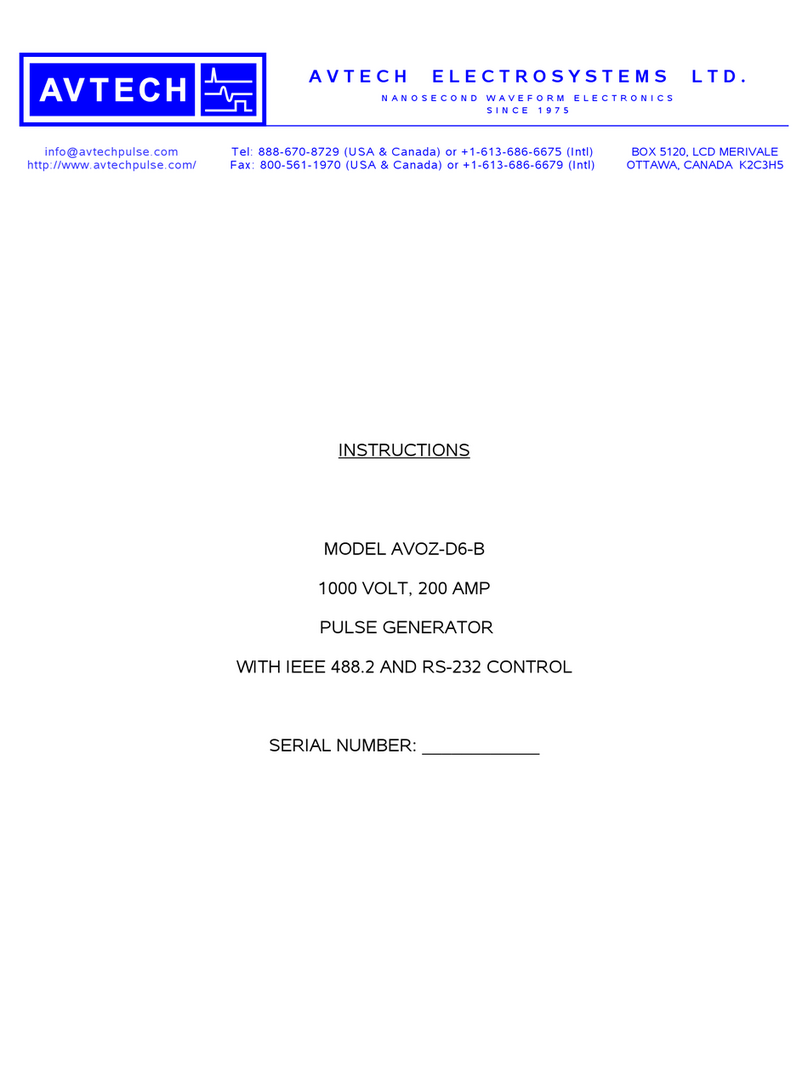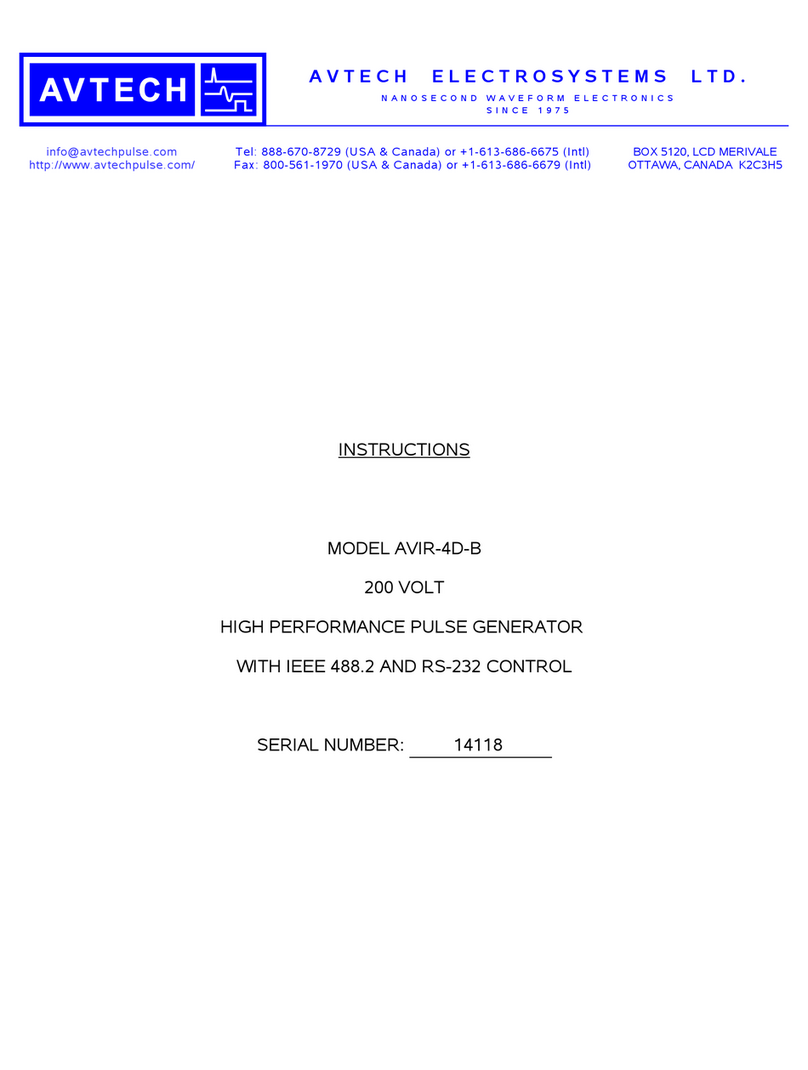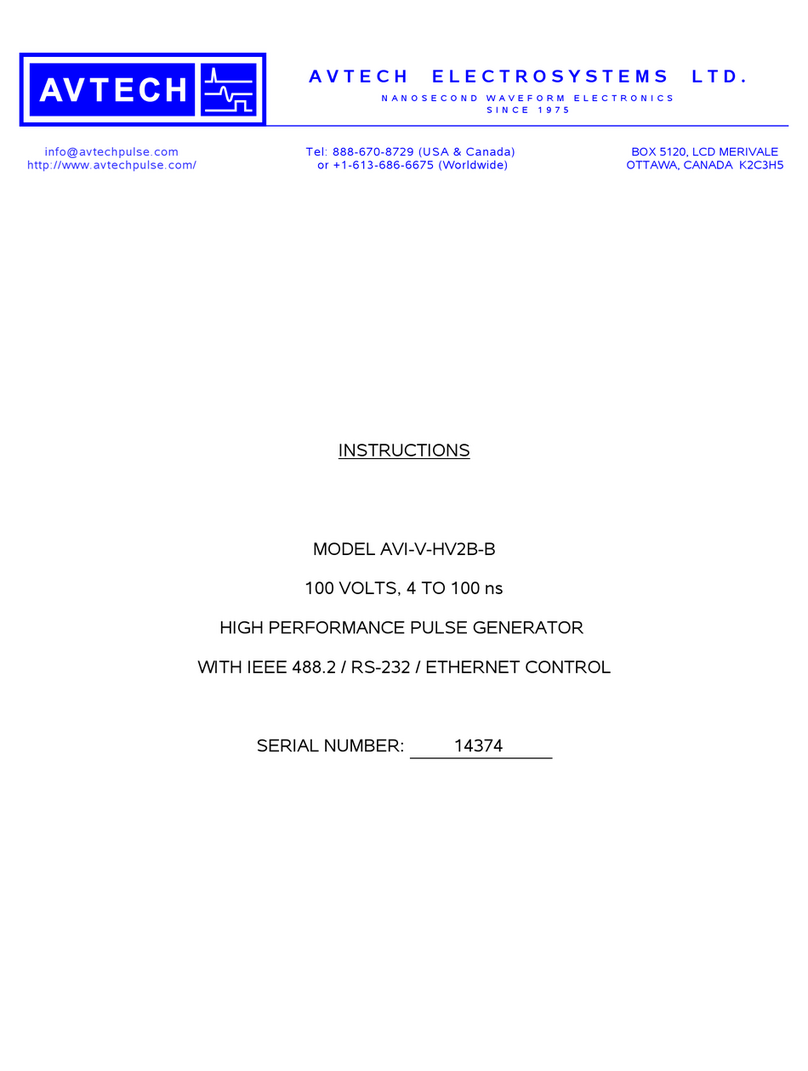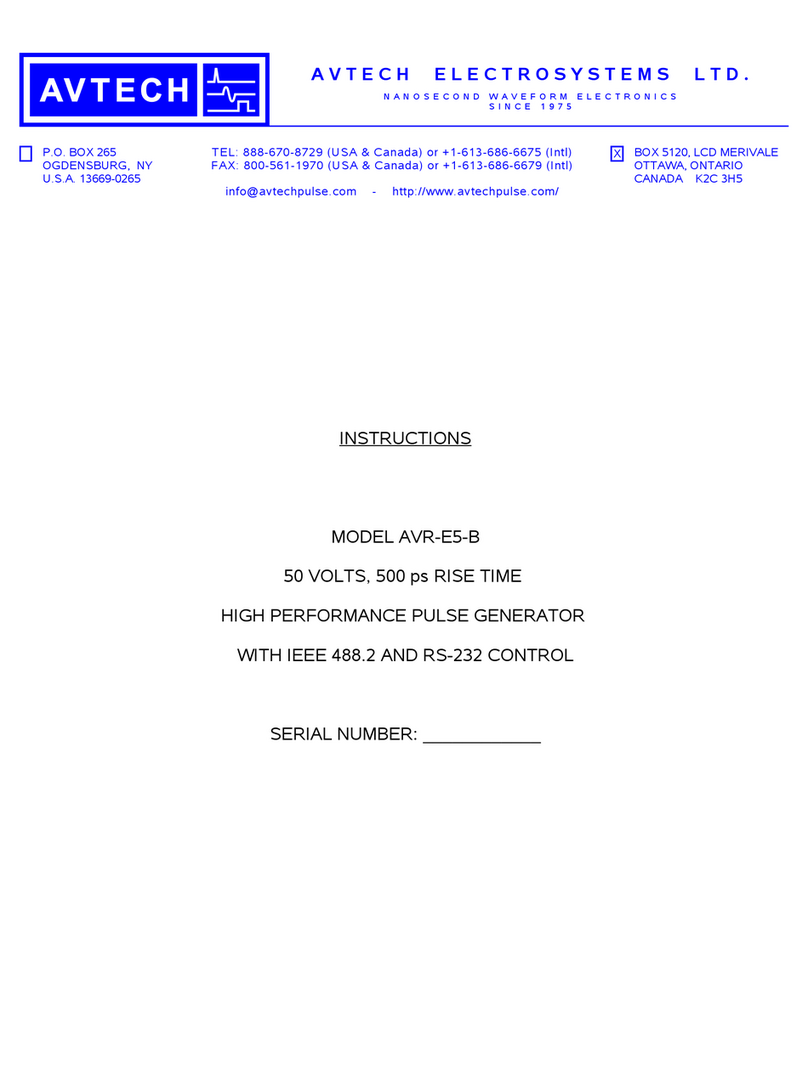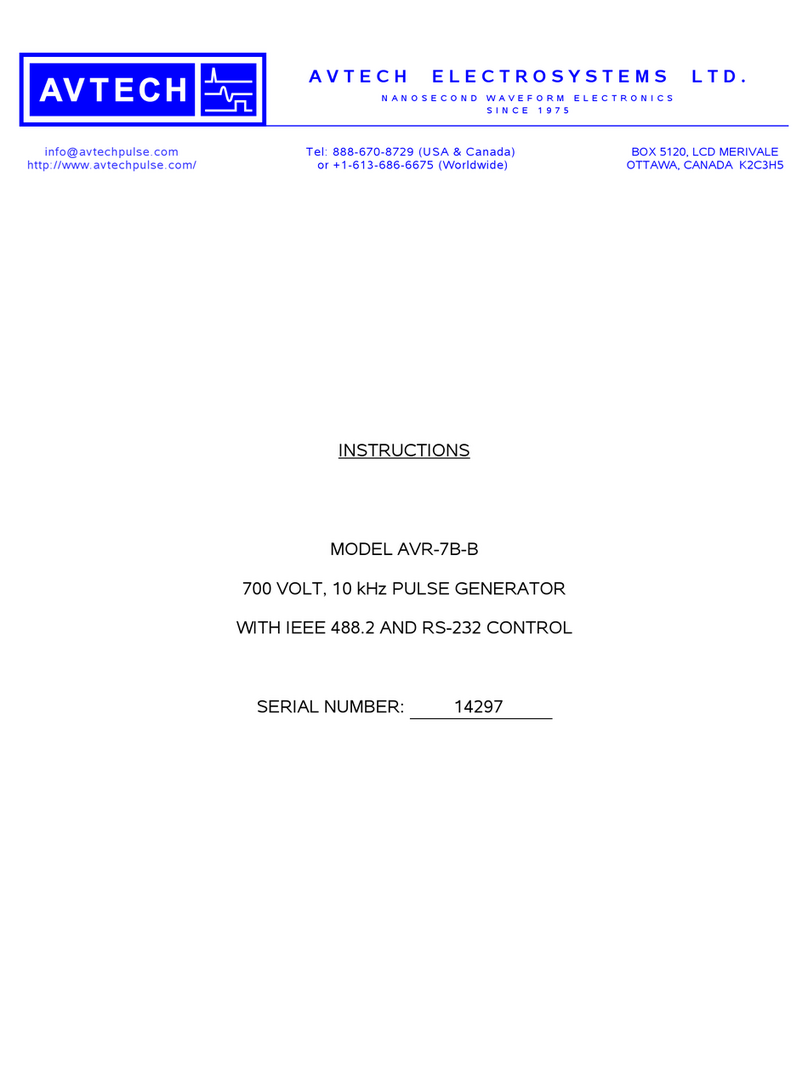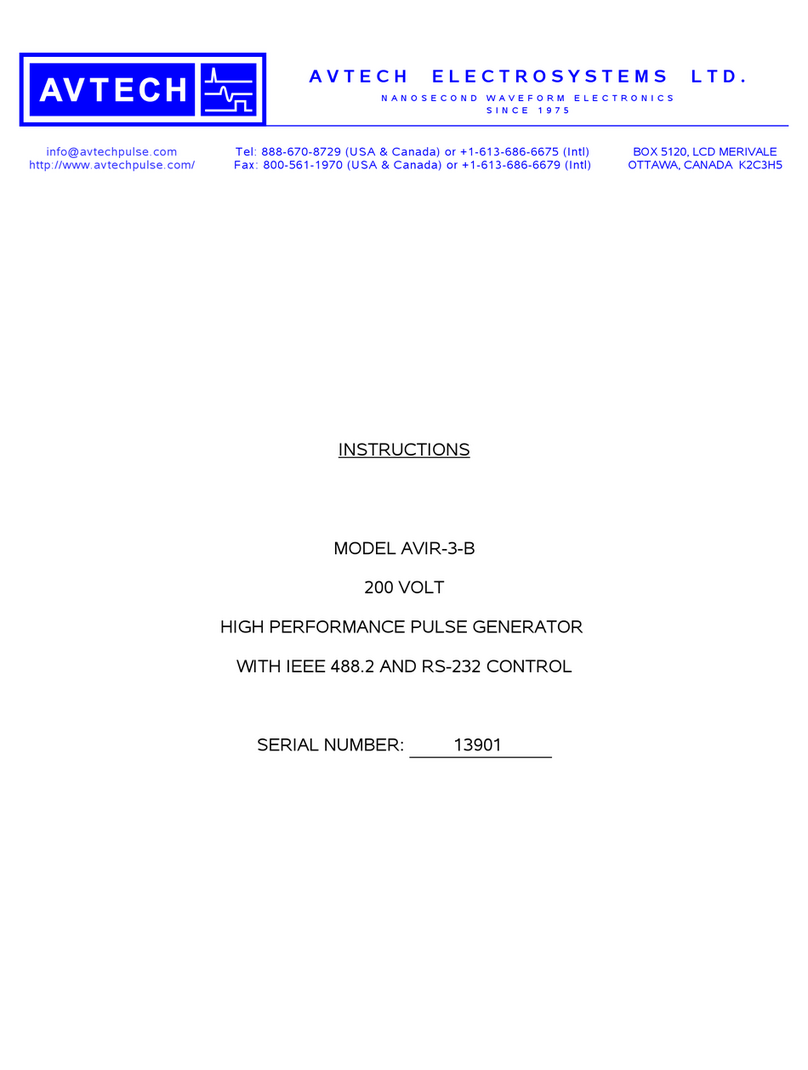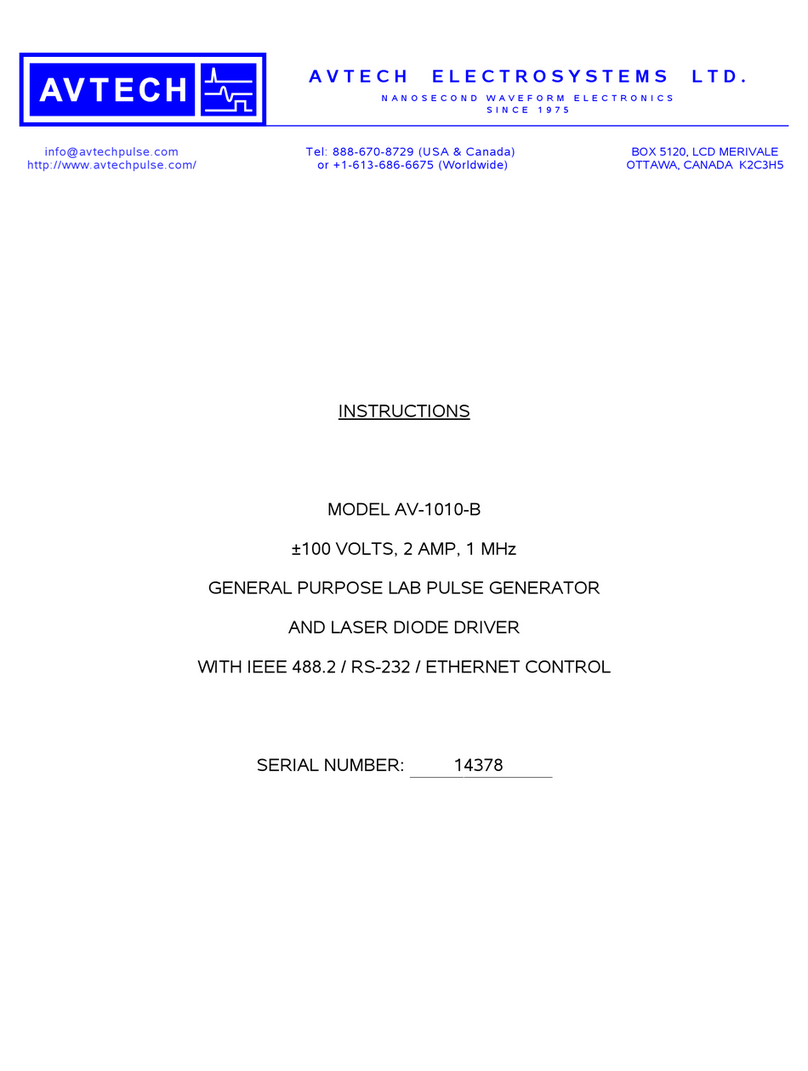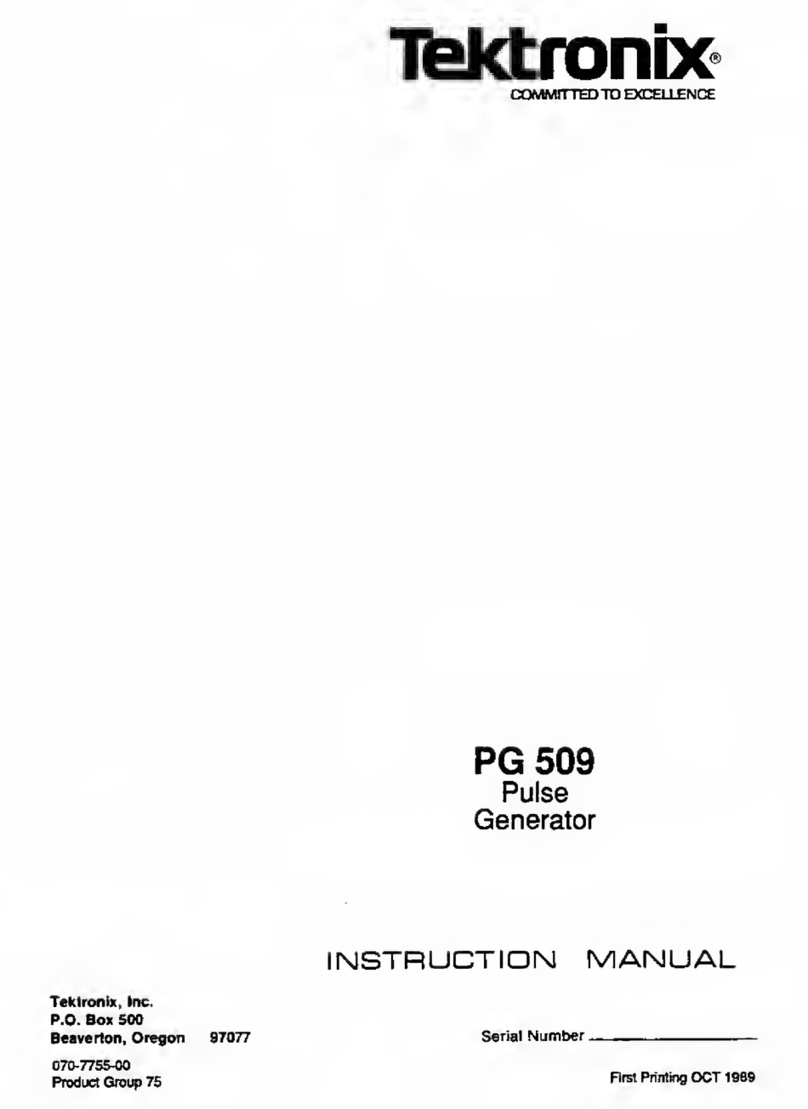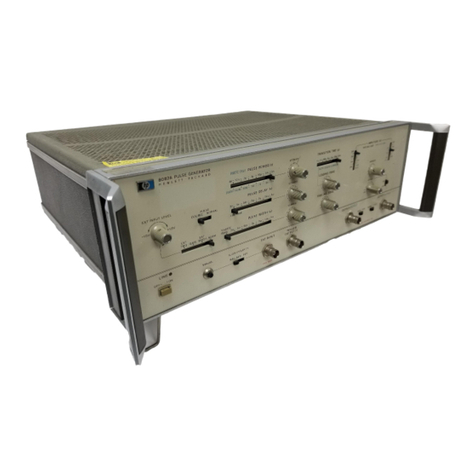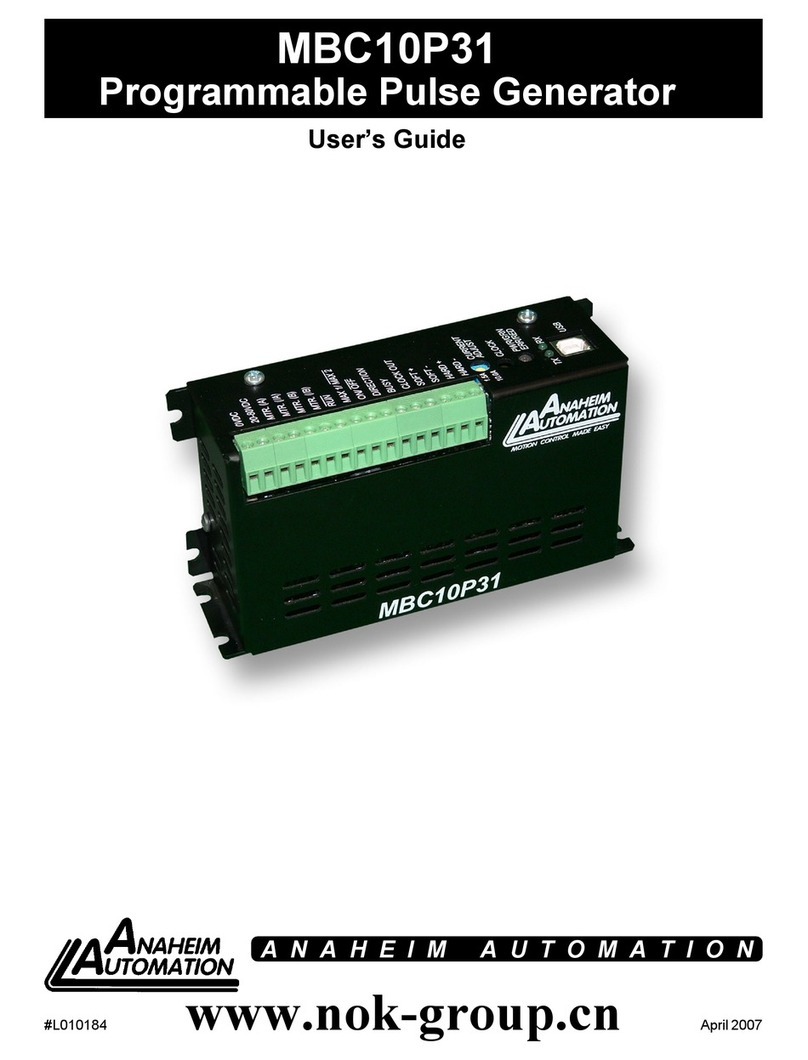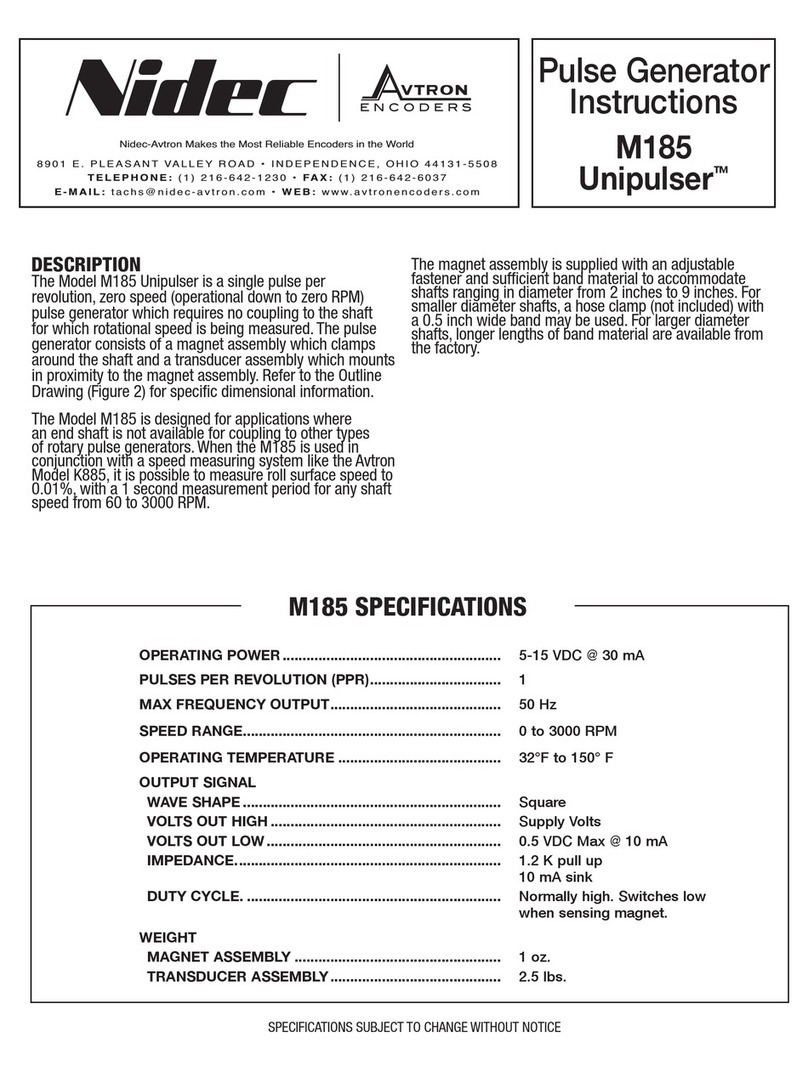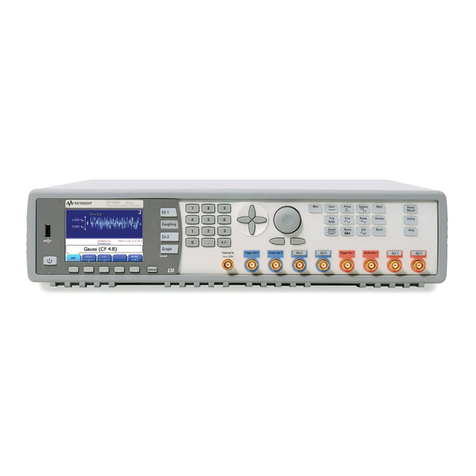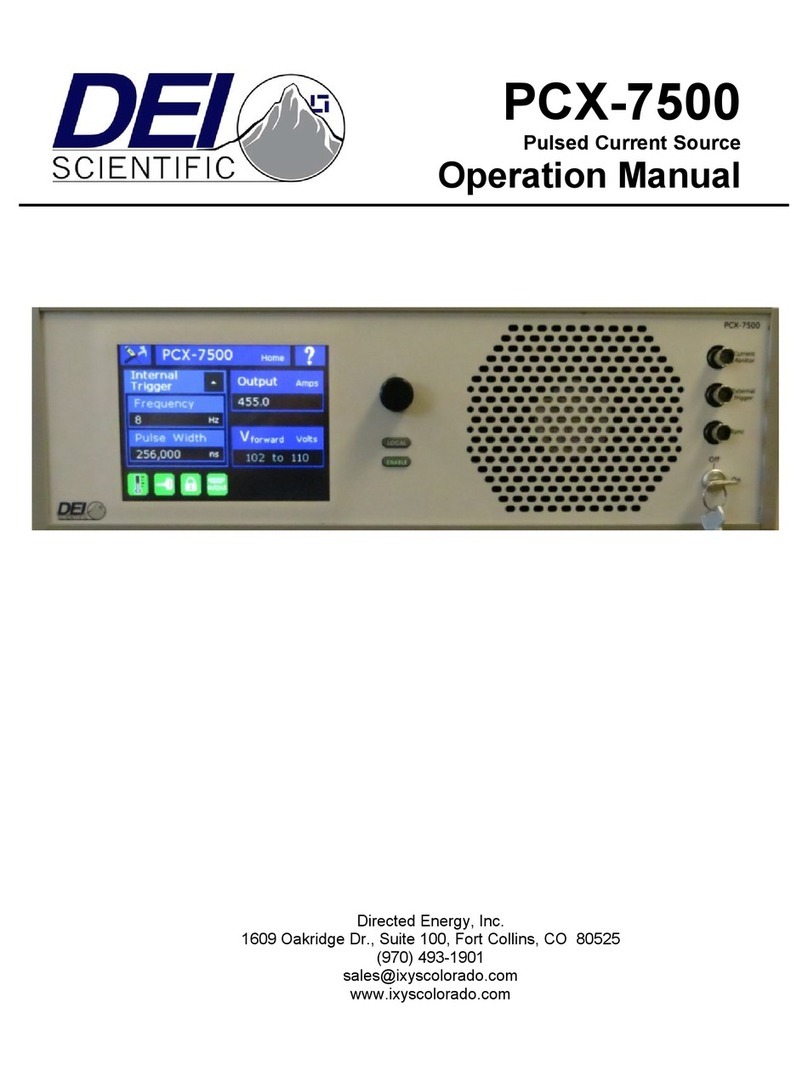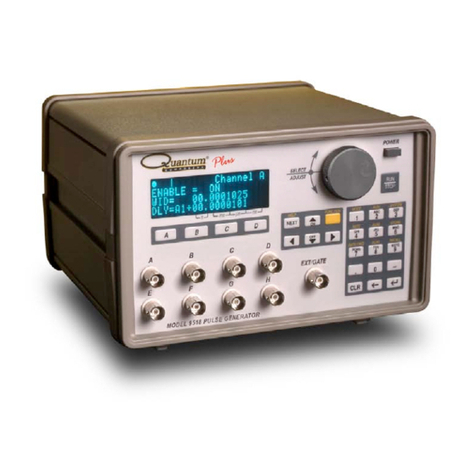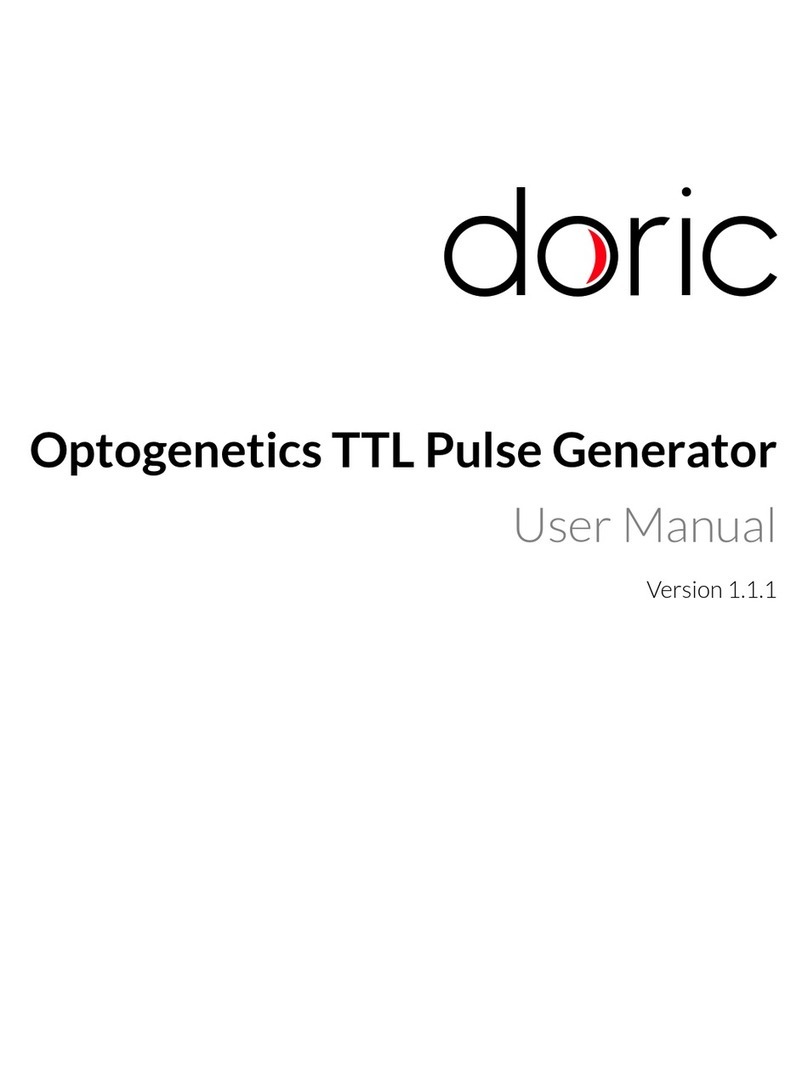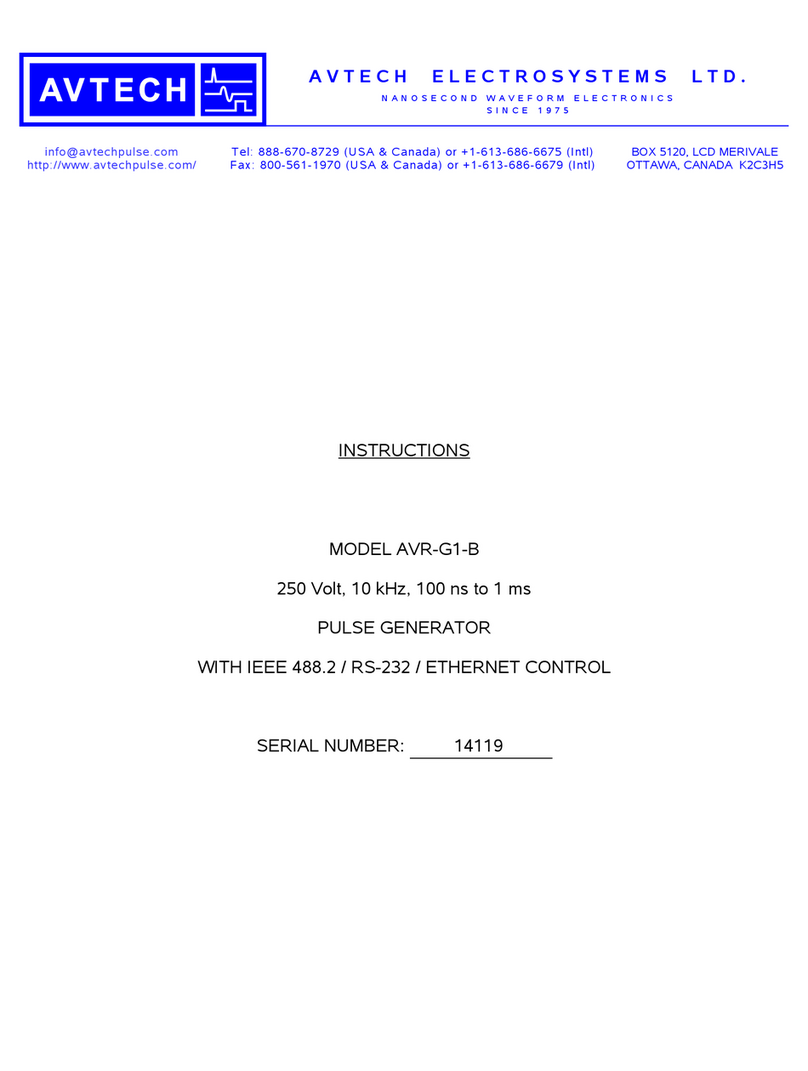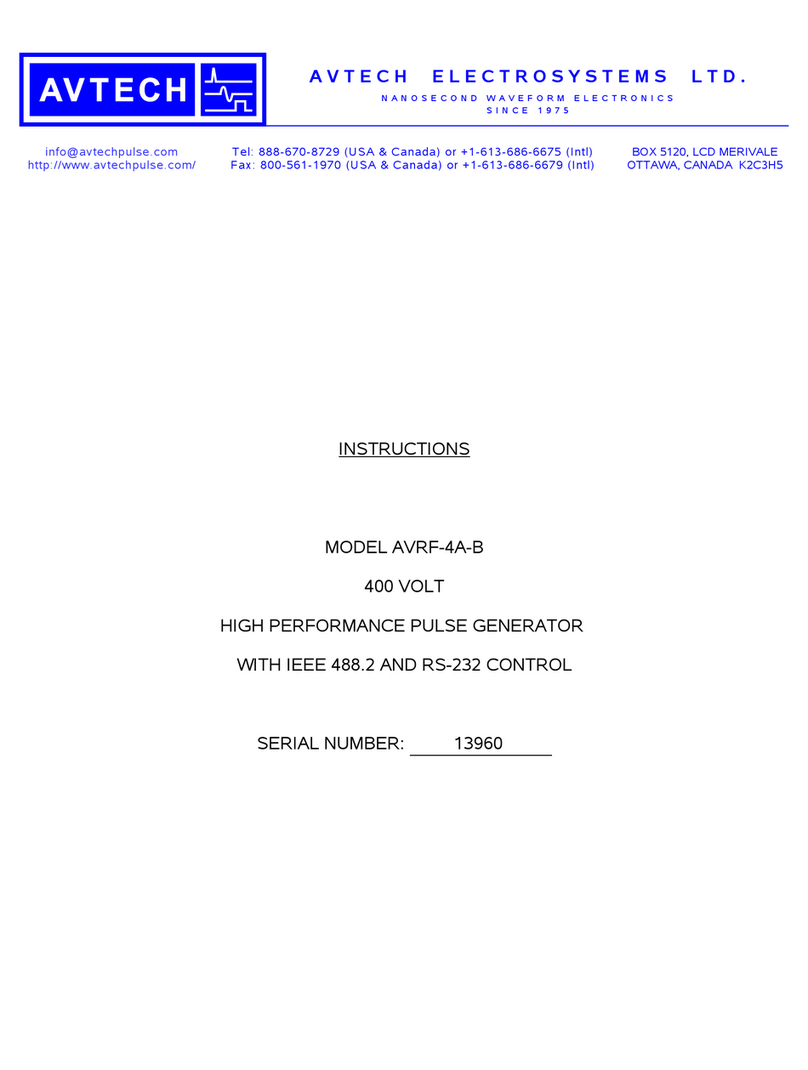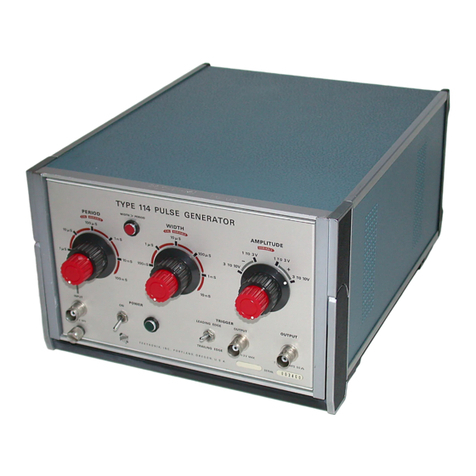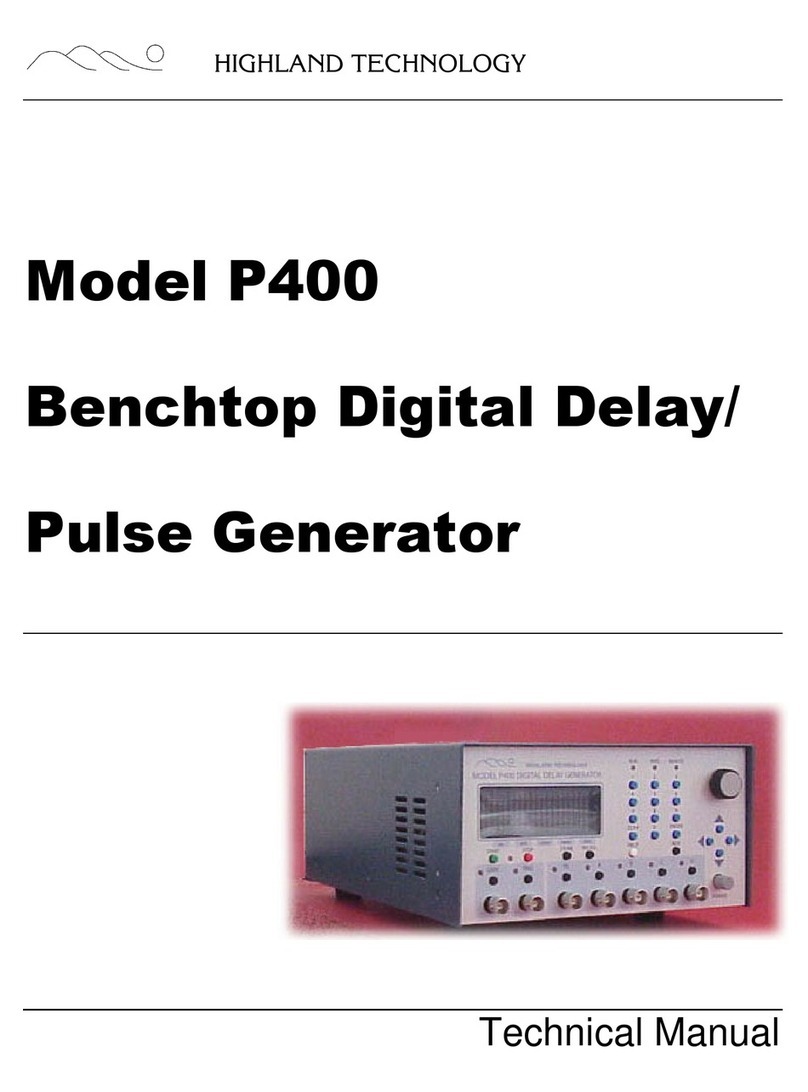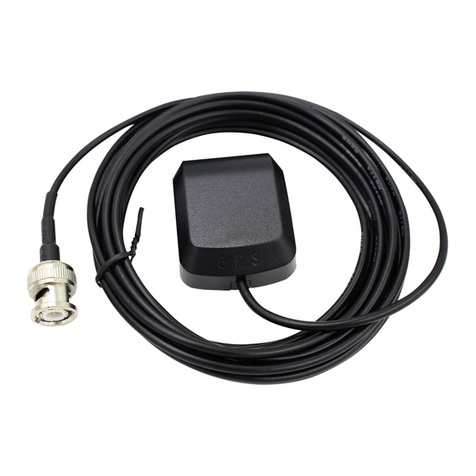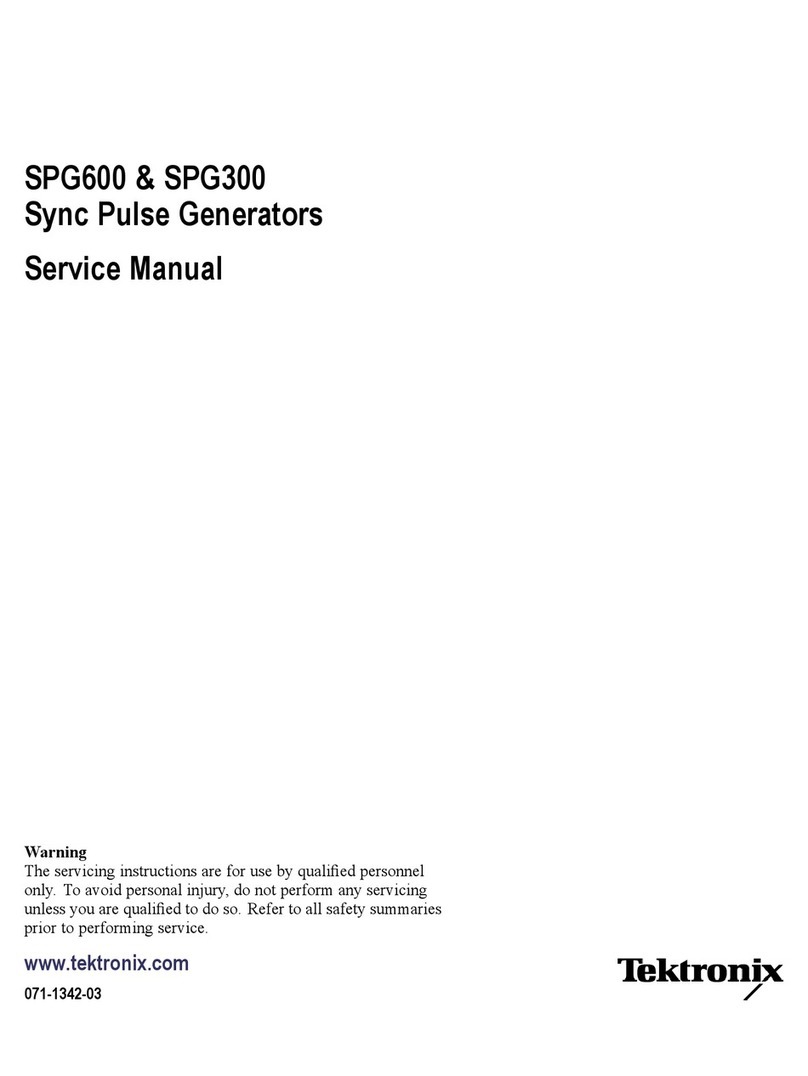SPECIFICATIONS
Model1: AVOZ-DF5-B
Amplitude: voltage:
current:
25 to 250V
0 to 50A
Required load impedance2 (RLOAD): 5 Ω
Pulse width (FWHM): 50 to 200 ns
Rise and fall times (20%-80%): < 15 ns
Maximum PRF: 2 kHz
Maximum average output power: 5 Watts
Polarity2: Positive or negative (specify)
Propagation delay: < 200 ns (Ext trig in to pulse out)
Jitter: ± 100 ps ± 0.0 % of sync delay (Ext trig in to pulse out)
Trigger modes: Internal trigger, external trigger (TTL level pulse, > 10 ns, 1 kΩ input impedance),
front-panel “Single Pulse” pushbutton, or single pulse trigger via computer command.
Variable delay: Sync to main out: 0 to 1.0 seconds, for all trigger modes (including external trigger).
Sync output: > + Volts, > 50 ns, will drive 50 Ohm loads
Gate input: Synchronous or asynchronous, active high or low, switchable.
Suppresses triggering when active.
Mainframe output connectors: Five SMA connectors, on rear panel (wired in parallel internally)
Supplied 1m/ 6” SMA-to-SMA
coaxial cables: 10
Included output module: An output module containing the required series resistance (5 or 10 Ohms, ±10%), and
capable of dissipating the maximum average power, is provided. The input side mates to the
provided coaxial cables, which connect to the mainframe output connectors. The output is
provided on a 2 cm x 2 cm ( /4” x /4”) section of microstrip circuit board. The load/DUT
should be soldered between the output and ground pads on this circuit board. Avtech can
provide special socketing arrangements for packaged diodes upon request. Note that any
added inductance present in the output-pad-to-diode path (L1) and diode-to-ground-pad path
(L2) will degrade the output rise and fall times according the the inductive time constant,
τ = (L1 + L2) / RLOAD.
Other connectors: Trig, Gate, Sync: BNC
GPIB & RS-2 2 control1: Standard on -B units. See http://www.avtechpulse.com/gpib for details.
LabView drivers: Check http://www.avtechpulse.com/labview for availability and downloads
Ethernet port, for remote control
using VXI-11. , ssh, telnet, & web:
Included. Recommended as a modern alternative to GPIB / RS-2 2.
See http://www.avtechpulse.com/options/vxi for details.
Settings resolution: The resolution of the timing parameters (pulse width, delay, period) varies,
but is always better than 0.15% of (|set value| + 20 ns).
The amplitude resolution is < 0.1% of the maximum amplitude.
Settings accuracy, after 10 minute
warm-up:
Amplitude: Typically ± ( % of setting) ± (2% of maximum).
Delay, Period: Typically ± ( % of setting ) ± (5 ns)
Pulse width: Typically ± ( % of setting ) ± (2 ns), at maximum amplitude. As the
amplitude is reduced, the pulse width may shift ± 5 ns. For high-accuracy applications
requiring traceable calibration, verify the output with a calibrated oscilloscope4.
Power, temperature: 100 - 240 Volts, 50 - 60 Hz.
Dimensions: Mainframe: 100 x 4 0 x 75 mm ( .9 x 17 x 14.8”),
Output module: 25 x 42 x 64 mm (1 x 1.65 x 2.5”)
Chassis material: Anodized aluminum, with blue plastic trim
Temperature range: +5°C to +40°C
1) -B suffix indicates IEEE-488.2 GPIB and RS-2 2 control of pulse amplitude, pulse width, delay and PRF. (See http://www.avtechpulse.com/gpib).
2) A series resistance of this value is included in the provided output module, to permit operation with low-impedance diode loads.
) Indicate desired polarity by suffixing the model number with -P or -N (i.e. positive or negative).
4) These instruments are provided with a basic calibration checksheet, showing a selection of measured output parameters. These measurements are performed with
equipment that is calibrated on a regular basis by a third-party ISO/IEC 17025:2005 accredited calibration laboratory. However, Avtech itself does not claim any
accreditation. For applications requiring traceable performance, use a calibrated measurement system rather than relying on the accuracy of the pulse generator settings.

